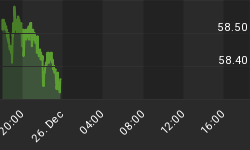Maybe you thought that less trade with China would mean fewer choices of lawn gnomes at Walmart this summer. And since you've recently sworn off, who cares anyway. Turns out China is also a leading provider of the raw materials used to make critical pharmaceutical drugs. We'll have fewer of those too and, in some cases, none at all.
What inspired me to write about this subject was the predicament of a friend in pain management. Last week a Wegmans pharmacy ran out of OxyContin® and several other prescription medicines. Customers were told that Wegmans' supplier did not have the ingredients to make several medicines and did not know when they would have them. Wegmans isn't a mom-and-pop corner store with no buying power. It's a 71-store chain on the east coast, is one of the largest private companies in the US and had sales of $4.8 billion in 2008. The active ingredient of OxyContin® is thebaine, an alkaloid compound distilled from opium. By law, it cannot be stored so each year's crop size is determined by expected sales. However, it's only February so the shortage in the US is not due to Asian exporters' supplies having run out.
The shortage of leucovorin, a generic used in the treatment of colon cancer, is so acute that many cancer patients are receiving lower-than-prescribed dosages or none at all. According to suppliers, the shortage is due to "manufacturing" delays. In an interview with Forbes, Michael Katz, chair of a committee of patients that advises the Eastern Cooperative Oncology Group (ECOG), said, "I've never heard of anything like it," nor had any of the doctors in the group. There is a fear that shortages will occur more frequently with generic drugs because the margins are so thin. Leucovorin is also called folinic acid, which is derived from vitamin B and, like most vitamins, vitamin B comes from China.
There is also a worldwide shortage of acetonitrile, a critical chemical ingredient used in the purification of pharmaceutical compounds. Acetonitrile is a by-product of the automotive industry and is in short supply due to the worldwide slowdown in that industry, which, in turn, has caused chemical production facilities around the world to close.
Going forward, a number of factors will influence the availability of life-saving medicines and other critical commodities.
Supply disruptions: The majority of growers and producers of the raw materials for drugs are in Asia. You remember the cliff dive of the Baltic Dry Index last year. It was a reflection of severe disruptions in international trade, which, in large part, was caused by the unwillingness of banks to accept letters of credit. This could be the reason for the shortages of opium distillates, vitamins and other raw materials, which are showing up in US pharmacies now.
Profitability and production stoppages: Indian pharmaceutical companies have stopped manufacturing some unprofitable drugs and they threaten to cut back on more. Their profits have been eroded by the fall in value of the rupee, which has raised their procurement costs for both packaging materials and bulk purchases of raw materials from China.
Distribution: Trucking companies across the country are both cutting back on routes and closing due to less business and higher costs. This reached crisis proportions during the gas price spike last spring and summer and is continuing due to reduced demand for hauling. Bankruptcies were up more than 118% by the second half of 2008. In a Reuter's interview, industry consultant Fred Crawford said he expects the acceleration of bankruptcies seen in the second half of 2008 to continue this year.
If demand for medicine decreases in a depression, it's not because people aren't sick. In fact, more people are sick, but they can't afford medical care. If you've come across the crisis-preparedness list of 100 Things that Disappear First, you know that drugs are at the top of the list. Well, we are in a crisis, we are ill-prepared and, sure enough, medicines are disappearing.















